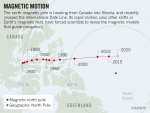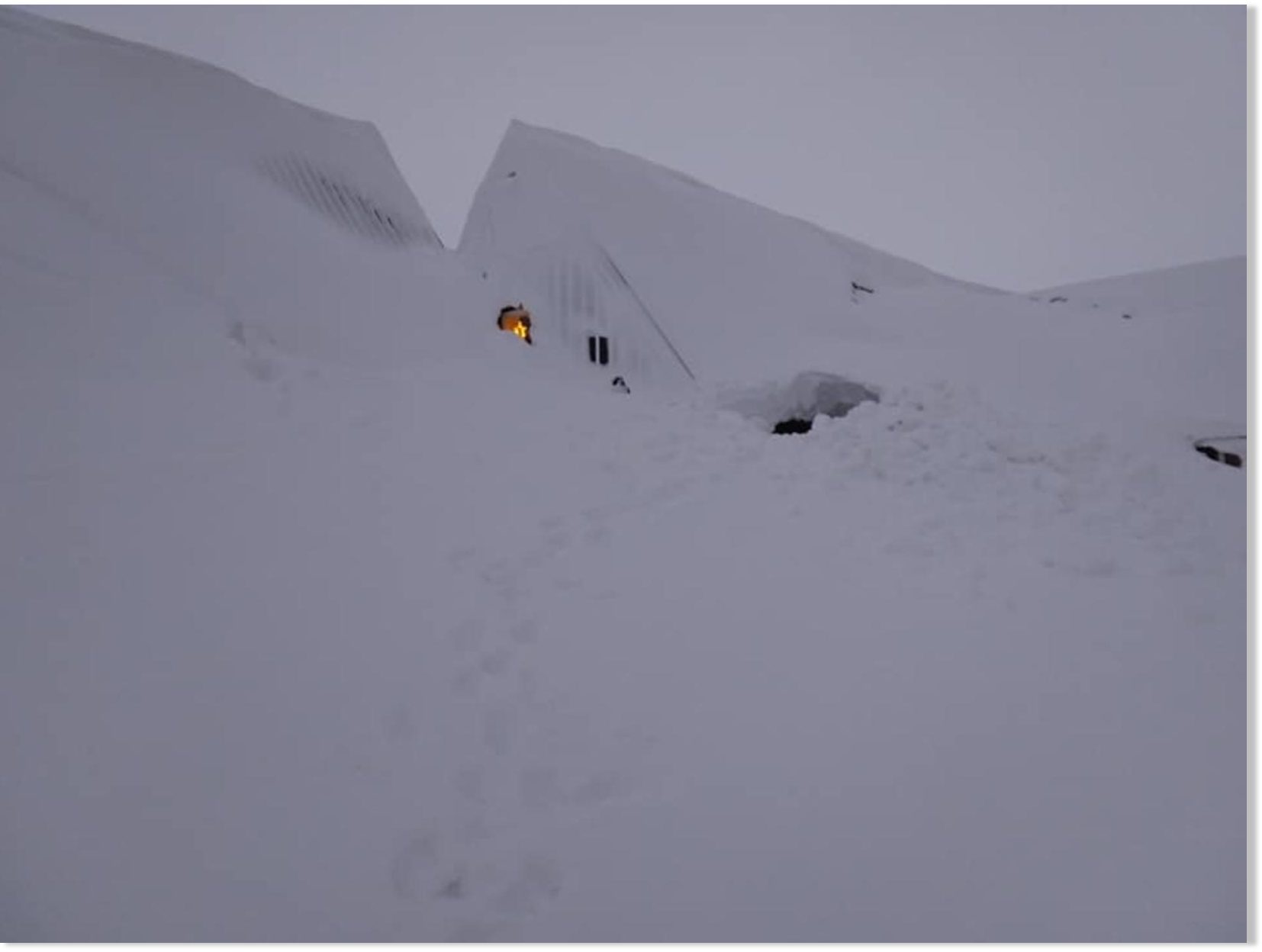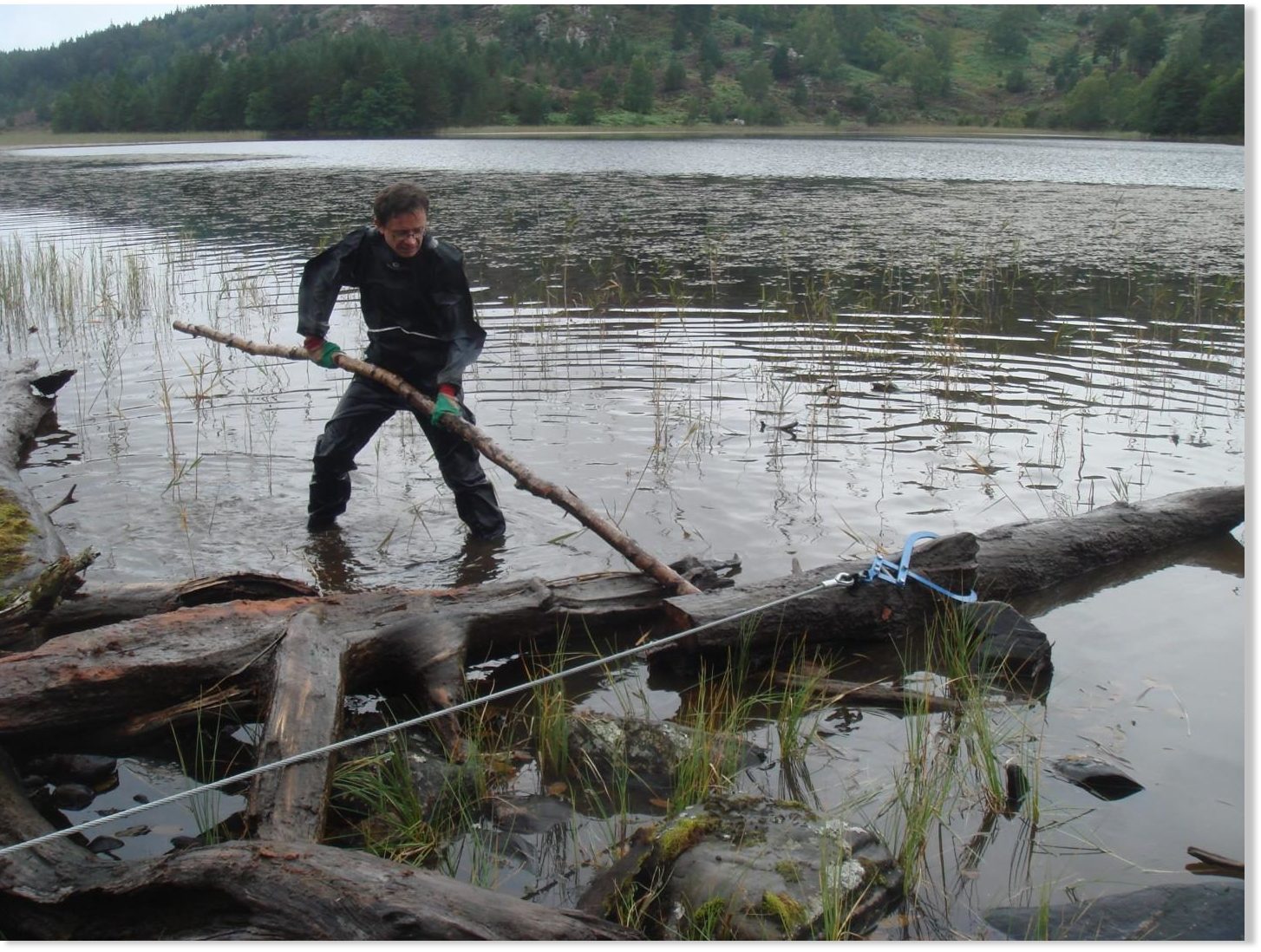The 'geographic' north pole is still in the same place it always was, but its 'magnetic' counterpart is roaming towards Siberia at a record-breaking pace.

electroverse.net
Gears of the Gods — Earth’s Magnetic Poles are Wandering
December 21, 2019 Poppalloff
Our planet is restless, and its poles are wandering. The geographic north pole is still in the same place it always was, but its magnetic counterpart – indicated by the N on any compass – is roaming towards Siberia at a record-breaking pace, as reported by sciencealert.com.
It’s worth stating that while the speed is remarkable, the movement itself isn’t. The magnetic north pole is never truly stationary, owing to fluctuations in the flow of molten iron within the core of our planet, which affect how Earth’s magnetic field behaves:
“Since its first formal discovery in 1831, the north magnetic pole has travelled around 1,400 miles (2,250 km),” the NOAA’s National Centres for Environmental Information (NCEI) explains on its website.
“This wandering has been generally quite slow, allowing scientists to keep track of its position fairly easily.”
That slow wander has quickened of late, however — in recent decades, the magnetic north pole accelerated to an average speed of 55 kilometres (34 miles) per year.
The most recent data suggest its movement towards Russia may have slowed down to about 40 kilometres (25 miles) annually, but even so, compared to theoretical measurements going back hundreds of years, this a phenomenon scientists have never witnessed before.
“The movement since the 1990s is much faster than at any time for at least four centuries,” geomagnetic specialist Ciaran Beggan from the British Geological Survey (BGS) told FT.
“We really don’t know much about the changes in the core that’s driving it.”
While researchers can’t fully explain the core fluctuations affecting the north pole’s extreme restlessness, they can map Earth’s magnetic field and calculate its rate of change over time, which helps us to predict how it may be distributed in the future.

That system produces what is called the World Magnetic Model (WMM): a representation of the field that powers everything from navigational tools like GPS to mapping services and consumer compass apps, not to mention systems used by NASA, the FAA, and the military, among other institutions.
Despite its importance, the WMM’s powers of foresight – like the magnetic north pole itself – are not set in stone, and the readings need to be updated every five years to keep the model accurate.
“Provided that suitable satellite magnetic observations are available, the prediction of the WMM is highly accurate on its release date and then subsequently deteriorates towards the end of the five-year epoch, when it has to be updated with revised values of the model coefficients,” the NCEI explains.
That’s the point we’re up to now, with the bodies that maintain the WMM – the NCEI and the BGS – having finally updated the model last week.
 The refresh comes a whole year ahead of schedule
The refresh comes a whole year ahead of schedule due to the unusual speed with which the magnetic north pole has been drifting, meaning that the WMM’s predictions have deteriorated faster than usual this cycle, despite the recent slowdown.
While the speed fluctuations seem crazy, it’s actually a more moderate range of pole movement than has happened in Earth’s history: when the magnetic poles move far enough out of position, they can actually flip, something that happens every few hundreds of thousands of years.
There’s no telling for sure when that might happen next, but if and when it does happen, it could have serious implications for humanity. In the meantime, the new WMM data is good until 2025, and rest assured, no imminent flipping is predicted for now,
writes sciencealert.com.

However, as mounting evidence suggests Magnetic Flips occur on a regular 12,000-ish year cycle, we could be facing a very bumpy ride very soon. In a recent video, Ben Davidson of SuspiciousObservers stated that the shift could be as close as 10-20 years from now, based on the observed data, which is very close to the highly controversial claim by Doug Vogt from the Diehold Foundation for the year 2046 and a super micro-nova strike.
The two events seem to be linked in some way, with the last major outburst from the sun occurring 9700 BC causing the ice sheets to rapidly melt as well as the extinction of most of the world’s mega-fauna at the end of the last Ice Age, in an event known as the Younger Dryas, which just happens to coincide with the last magnetic flip.

Davidson,
and Dr. Robert M. Shock, have estimated that the micro-nova event was as much as 40 times the power of the most destructive solar storm observed in modern history, the 1859 Carrington event. This would make the Younger Dryas micro-nova as much as an X-100+ solar flare according to the measurement scale currently in use. Quite alarming, especially if this were to repeat any time soon.
The enormous amount of plasma that arrived immediately after the micro-nova event circa 9700 BCE, bombarded the Earth producing an effect similar to one or more major asteroid impacts. This has caused confusion and led many archaeological researchers into mistakenly interpreting historic evidence of impacts causing and/or ending the last ice age, as deriving from asteroid impacts rather than plasma discharges.
In his interview and book, Schoch asserts that ancient records are consistent with a solar flash that wiped out an ancient civilization predating the end of the last Ice Age, widely assumed to be Plato’s Atlantis.
The scientific data on solar flashes goes back several decades. Bradley Schaefer, an astrophysicist at NASA’s Goddard Space Flight Center, wrote a paper titled, “Flashes from Normal Stars” that appeared in the February 1989 edition of The Astrophysical Journal. He dated the beginning of research into solar flashes to a 1959 study by H. Johnson who at the time “performed the only study which is capable of detecting rare flashes from normal field stars.”
Schaefer examined NASA data on glazing discovered on lunar rocks that was first presented in a 1969 paper by T. Gold published in Science who had concluded: “Some glazing is apparently due to radiation heating; it suggests a giant solar outburst in geologically recent times”. Schaefer agreed with Gold’s analysis and reached a similar conclusion:
The existence of a glazing on the top surfaces of lunar rocks has been used as a strong argument for a “solar outburst” where the Sun increased its luminosity by over 100 times for 10 to 100s within the last 30,000 years.
Schaefer went on to describe how such a “solar outburst” (aka solar flash or micro-nova) could result in an Extinction Level Event:
The Younger Dryas Black Mats
Of the 97 geoarchaeological sites of this study that bridge the Pleistocene-Holocene transition (last deglaciation), approximately two thirds have a black organic-rich layer or “black mat” in the form of mollic paleosols, aquolls, diatomites, or algal mats with radiocarbon ages suggesting they are stratigraphic manifestations of the Younger Dryas cooling episode 10,900 B.P. to 9,800 B.P. (radiocarbon years). This layer or mat covers the Clovis-age landscape or surface on which the last remnants of the terminal Pleistocene megafauna are recorded. Stratigraphically and chronologically the extinction appears to have been catastrophic, seemingly too sudden and extensive for either human predation or climate change to have been the primary cause. This sudden Rancholabrean termination at 10,900 ± 50 B.P. appears to have coincided with the sudden climatic switch from Allerød warming to Younger Dryas cooling. Recent evidence for extra-terrestrial impact, although not yet compelling, needs further testing because a remarkable major perturbation occurred at 10,900 B.P. that needs to be explained.
So, there’s an ever-mounting body of evidence that a major shift is imminent.
So, why aren’t we being told about it?
I know, I know.
Silly me.
“Shut up and pay your taxes.”





















